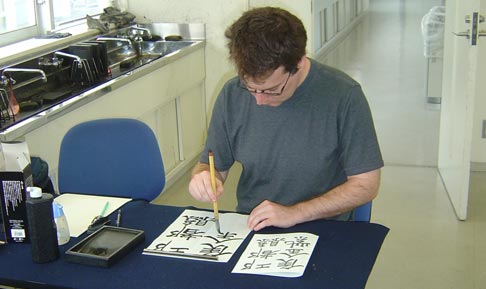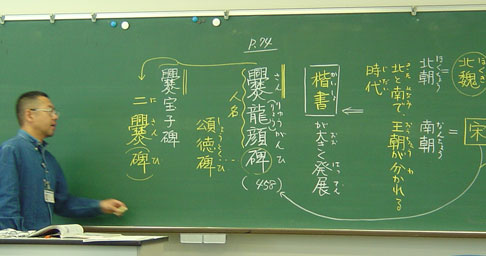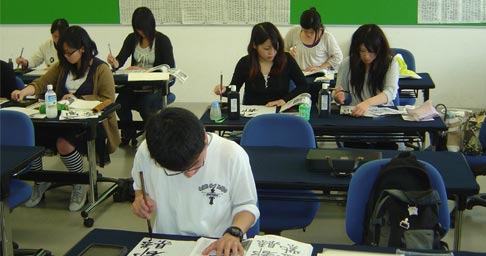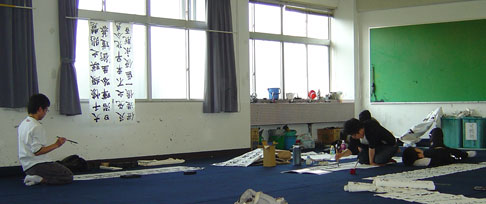
Pictured: Me interperting an ancient text
At the beginning of April, I came to Japan on a Monbusho Scholarship to study Japanese Calligraphy at Shikoku University. Previous blog entries about exactly what the Monbusho Scholarship is and how I got involved in it can be found here.
Now that I’ve been here in Japan for almost two months now, I think I have enough of a sense of what the experience is shaping up to be to write an overview of what a typical week is like.
*****
Although I’m officially designated as an independent research student, the calligraphy department faculty has been kind enough to allow me to sit in on regular classes for the first semester, to serve as a crash course to the various styles of Japanese Calligraphy. Every weekday I have one class, except for Thursdays when I have three. Below is a list of the subjects I’m studying:
Regular Script (twice a week)
Seal Script
Semi-cursive Script
Cursive Script
Penmanship
History of Chinese Calligraphy
This goes without saying probably, but all of the classes are conducted in Japanese. In fact I wasn’t even sure what the calligraphic styles were called in English when I started writing this blog entry, and had to look them up on Wikipedia.
For all but the history class, the classes are pretty hands on. They usually begin with the professor providing a short explanation about what we’ll be practicing that day, possibly in the form of a mini-history lecture.

That’s followed maybe by a demonstration, and then the rest of the class is devoted to practicing writing something from a handout or our textbook.

The History of Chinese Calligraphy class, on the other hand, is a standard lecture class. This was the class I was most worried about when I first started. Much to my surprise, however, I’m actually able to understand most of it (with the help of my Japanese electronic dictionary) and it’s pretty interesting.
I will say this though; my Japanese level is such that I need to pay really careful attention to understand what is being said. I can sustain that level of concentration for about an hour or so. After that, my comprehension takes a nosedive, and by the end of a ninety minute class, I just can’t keep focused, and understand almost nothing. So by the end of the day on Thursday, having attended three classes totaling four and a half hours, I’m physically exhausted down to my bones. On Thursdays I drag my carcass home the minute classes are over, and veg out.
On every other weekday, I usually stay at school after class and practice what I’ve learned. There’s a huge room for this purpose, carpeted in felt. Oftentimes other students will be in there, practicing calligraphy on long sheets of paper laid out on the floor.

So far I’ve been very happy with my studies here at Shikoku University. I haven’t been here long yet, but feel like I’ve already learned a lot. I’ll write about some of the harebrained conclusions I’ve drawn, as well as show some of my calligraphy, at some point in the coming months.
But for now, I’ll leave it at this. Next week’s entry will be devoted to my new surroundings, and the people I’ve met here.

Pingback: Talking with Tim » Blog Archive » Lars Martinson on Tonoharu()